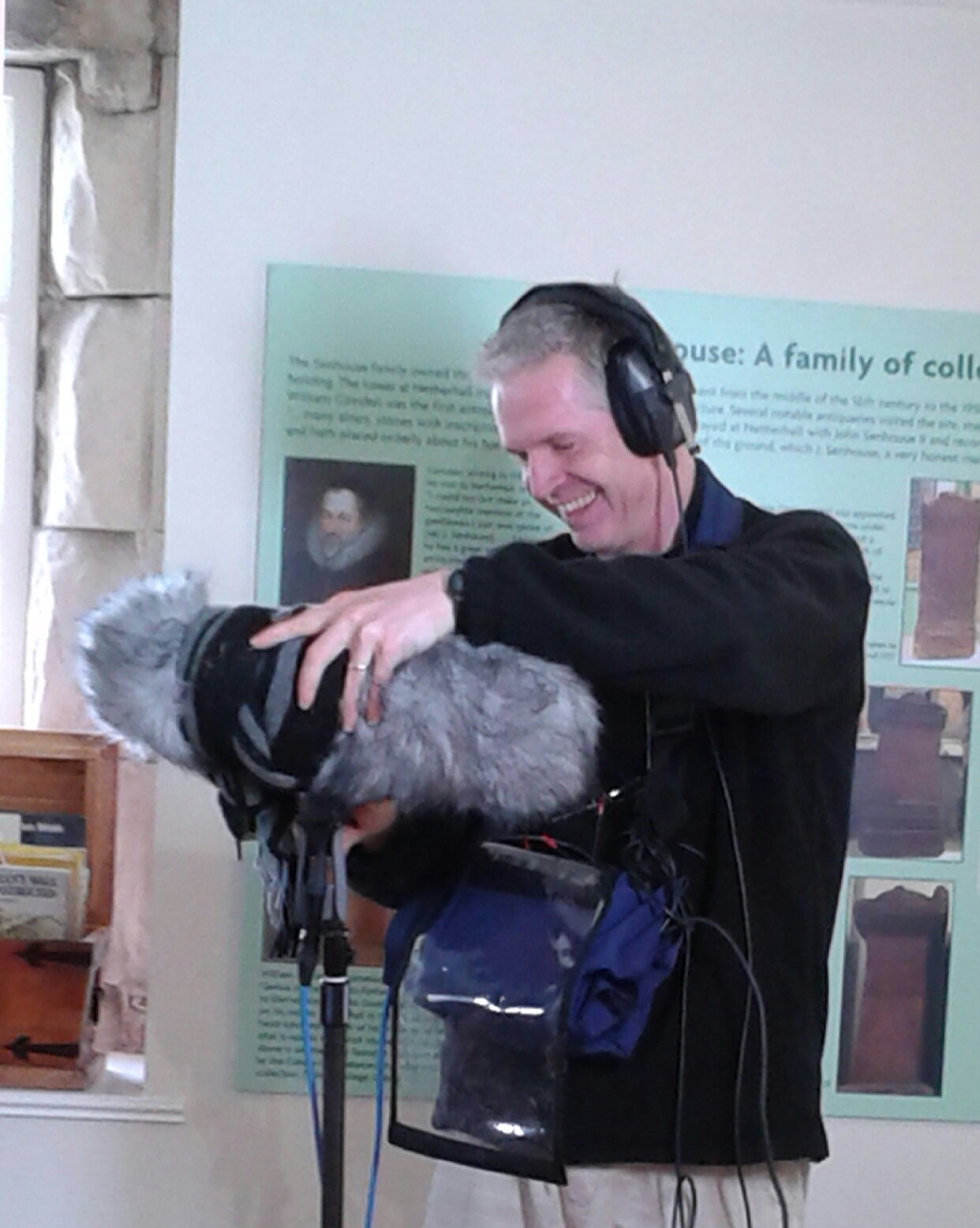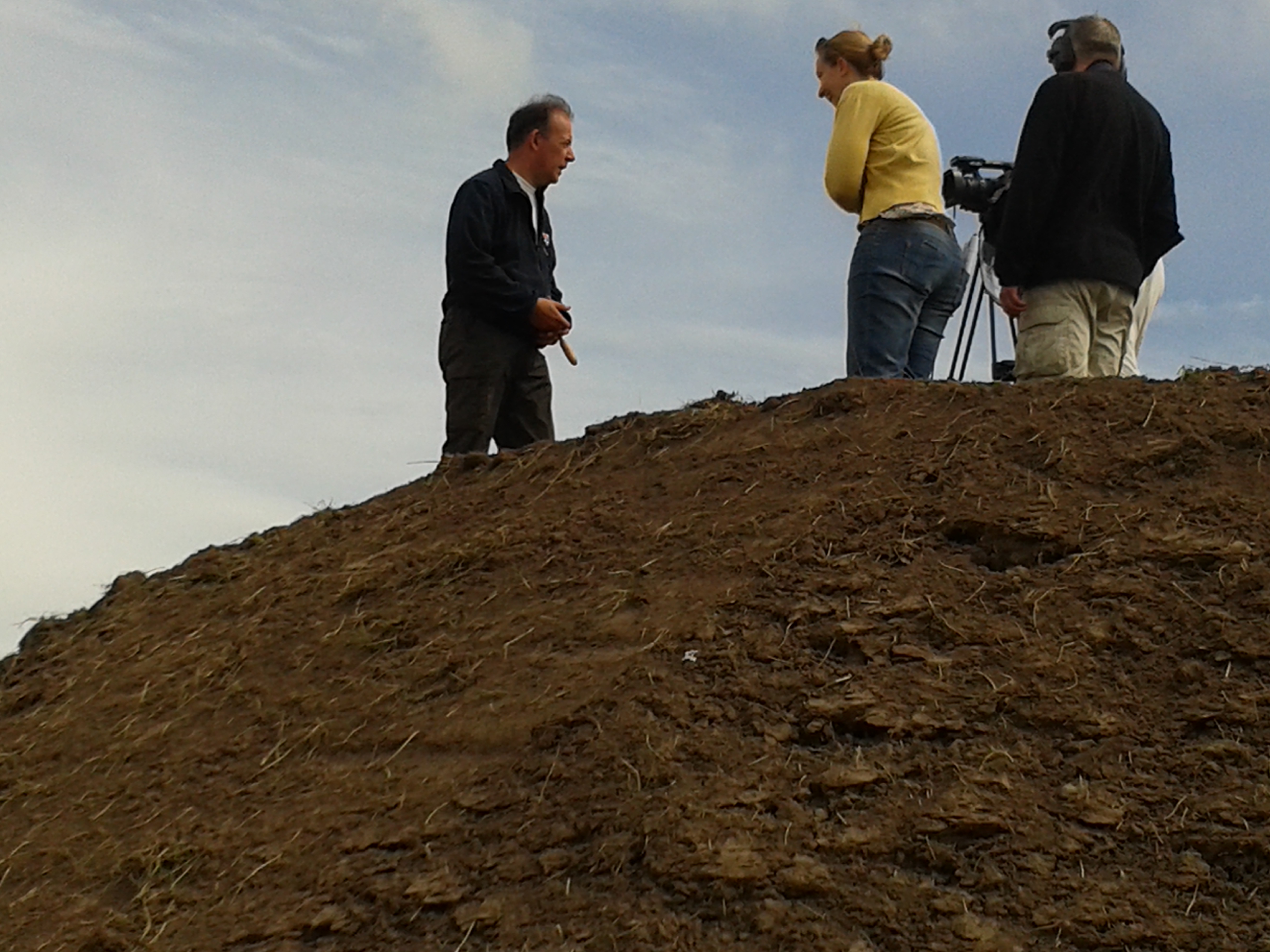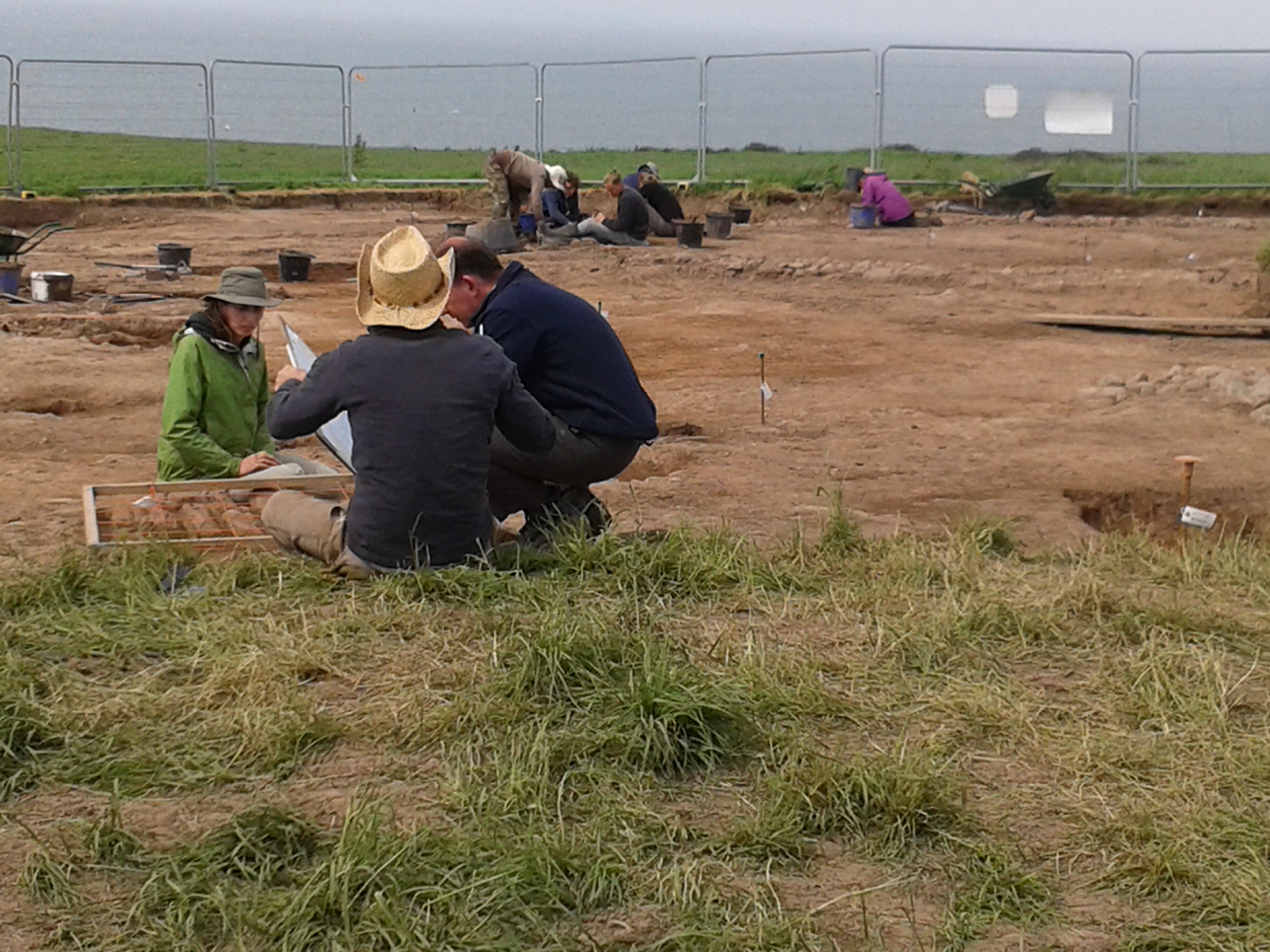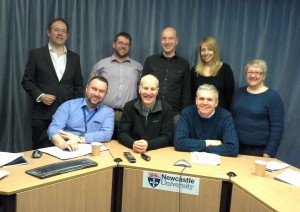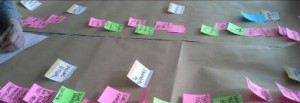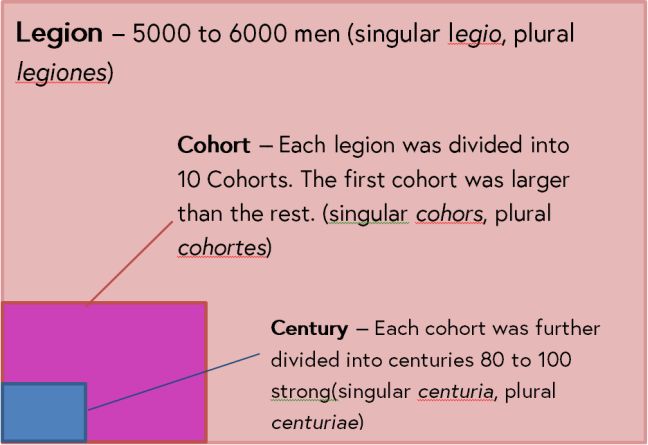Celebrity chef John Crouch cooked us some Roman inspired food for our free online course Hadrian’s Wall: Life on the Roman Frontier which starts on Monday.
John very kindly said we could share his recipes. Why not try cooking one of them this weekend?
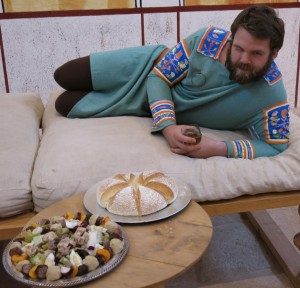
ROMAN CABBAGE SALAD
(KRAMBE)
1 white cabbage
2 tablespoons white wine vinegar
2 tablespoons clear honey
a bunch of fresh coriander leaves
a sprig of fresh rue
1 teaspoon asafoetida powder
salt (optional)
Thinly slice the cabbage as for a coleslaw and arrange in a salad bowl. Combine the vinegar with the honey in a cup. Finely chop the coriander and rue and add to the honeyed vinegar. Season with salt if you wish, although the dressing is strong enough not to need it. Stir the asafoetida into the dressing and pour over the cabbage. Toss before
serving.
HARE SERVED IN ITS OWN GRAVY
1½kg (3lb) hare
seasoning
1 tablespoon olive oil
250ml (½pt) chicken stock
65ml (1/8pt) reduced chicken stock
2 teaspoons chives
1 teaspoon coriander
pinch of aniseed
sauce
¼ teaspoon ground pepper
1 teaspoon celery or lovage seed
½ teaspoon cumin
pinch of fennel
1 teaspoon mint
pinch of rosemary
1 small onion, chopped
2 teaspoons honey
125ml (¼pt) stewing pan juices
125ml (¼pt) boiled red wine
1 teaspoon white wine or cider vinegar
flour
pepper
In a stewing pot, put the olive oil, stock, chives, coriander, and aniseed. Cut up the hare into pieces and add to the pot. Cover, bring to a boil, and cook the hare for about 1 hour over low heat.
For the sauce, in a mortar grind the pepper, celery or lovage seed, cumin, coriander seeds, fennel, mint, and a pinch of rosemary. Add the onion, and combine with the honey, liquid from the hare pan, boiled wine, and vinegar.
Uncover the hare, add the sauce to the stewing pan, and cook for a further 30 minutes. Thicken the sauce with flour, and serve the meat drenched in sauce. Sprinkle with pepper at the table.
NETTLE QUICHE
200g (8oz) nettles
butter
100g (4oz) fresh mushrooms, sliced
200g (8oz) cheese, grated
1 medium onion, sliced in rings
100g (4oz) flour
¼ teaspoon salt
1 tablespoon fish-pickle
3 eggs
350ml (12floz) cream
1 teaspoon coriander
½ teaspoon freshly ground black pepper
Pick a basket of young spring nettles and steam in a covered pan for 30 minutes. Take 200g (8oz) of nettles, drain and chop. Arrange in a buttered quiche dish. Cover with layers of mushrooms, cheese, and onion. Now blend the flour, salt, fish-pickle, well beaten eggs, cream, coriander, and pepper. Pour the mixture over the dry ingredients in the quiche dish. Bake in a 200°C (400°F/Gas Mark 4) oven for 35 to 40 minutes, and serve hot with a sprinkling of pepper. Alternatively, chill and serve cold.
We’ll share some more recipes with you as we get nearer to the visualisation of a Roman banquet at Arbeia Roman Fort, South Shields.
Have a great weekend.

